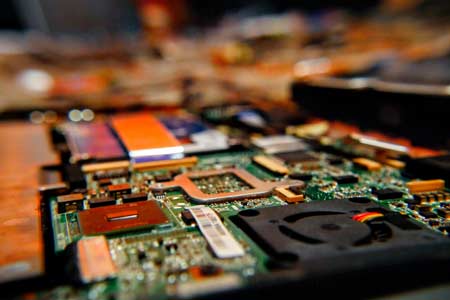If you’ve experienced it, you definitely understand that data loss can be costly, frustrating, and heartbreaking — and while data recovery is almost always possible in sometimes surprising conditions, our clients frequently ask for advice on how to increase their chances of a successful recovery.
 We recommend that you learn how to recognize the signs of data loss and take immediate action to limit the extent of the damage when you’re in such a situation. In order to maximize your chances of success, you should contact a professional data recovery services provider as soon as possible, regardless of whether you need to recover data from a hard drive, solid-state drive (SSD), RAID array, or even a company or email database.
We recommend that you learn how to recognize the signs of data loss and take immediate action to limit the extent of the damage when you’re in such a situation. In order to maximize your chances of success, you should contact a professional data recovery services provider as soon as possible, regardless of whether you need to recover data from a hard drive, solid-state drive (SSD), RAID array, or even a company or email database.
Following that, we’ll take a closer look at the data recovery process and outline the steps to take in the event of a failed hard drive. As a reminder, Hard Drive Recovery Group offers free media evaluations, and all of our services are backed by a guarantee that you will not be charged if your data is not recovered.
The Number One Consideration For Successful Recovery? You Are In Control
Over the course of three decades, we’ve kept track of the outcomes of thousands of cases and analyzed the data to identify factors that influence the likelihood of recovery. When evaluating new cases, our data recovery services engineers make use of this information in order to increase the chances of success. We are able to accurately report the likelihood of a complete recovery in each failure analysis report by comparing each data loss scenario to other cases with similar profiles.
Basically, no matter how unique your data loss situation, Hard Drive Recovery Group has seen it.
And while there are a lot of things that can influence success rates, one factor is particularly important: the longer a device remains operational after a data loss, the lower the chances of a successful recovery. Which makes a lot of sense, as usually these hard drives are mechanically damaged, and the longer you operate a damaged drive, the less chance of restoration.
If a hard disk drive experiences a physical failure, continuing to use the media in a failed state may result in additional damage. Basic conventional hard drives, for example, may fail if the actuator heads fail to function properly. If the drive heads come into contact with the platters at any point, the data on the hard drive will be permanently erased from the drive.
It is possible that operating your failed device will overwrite a portion of the data you need if the data has suffered logical damage (for example, if files have been corrupted or accidentally deleted by a user).
And unfortunately, when computer users notice signs of data loss, they frequently install data recovery software or use disk monitoring programs to investigate the problem. What is unfortunate about this is that they often unintentionally make the situation worse by forcing the device to operate.
Add to that the fact that most data recovery programs are incredibly resource and hard disk intensive, and you may be setting yourself up for a permanent data disaster.
Deleted:
Data Loss Doesn’t Discriminate
It’s important to understand that any type of digital device or media can encounter permanent data loss at any time. Hard Drive Recovery Group has consistently achieved industry-leading success rates in recovering data from hard drives, RAID arrays, flash media, and a variety of other storage media. However, while the vast majority of cases are recoverable, severe damage (caused by some of the examples above) can jeopardize data recovery efforts in some instances.
Hard Drive Problems? Here’s What To Do Next
If you find yourself unable to access critical files for any reason — and you don’t have a backup of the data in question — turn off the device immediately and restart it. If there are any signs of physical damage on the storage media, such as , do not attempt to operate it.
Take the steps outlined below to increase your chances of a successful data recovery attempt:
Keep a record of any symptoms that may be associated with data loss. Unusual noises (such as hard drive clicking sounds) may be heard from hard drives, and RAID arrays may report error codes indicating controller issues or hardware failures. Gather as much information as you possibly can in this situation, taking extensive notes if necessary. Understand that the more a data recovery services provider knows about your data loss situation, the easier and cheaper your data recovery will be.
When working with media and prepping it to send to Hard Drive Recovery Group, use caution and common sense. Anti-static procedures should be followed when removing hard drives and solid-state drives from the chassis of your computer. For devices that have exposed printed circuit boards, anti-static bags should be used when shipping the media.
Hard Drive Recovery Group offers certified clean room data recovery. In addition to offering free evaluations and our no data, no charge guarantee, we are always prepared to assist you in minimizing risks while ensuring the best possible case outcome.
